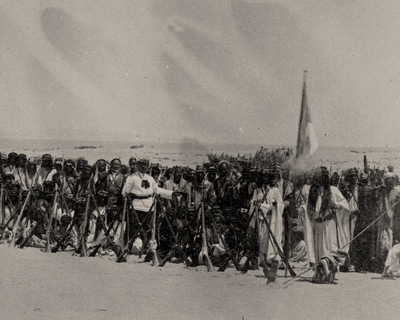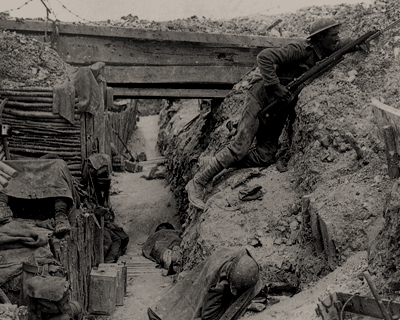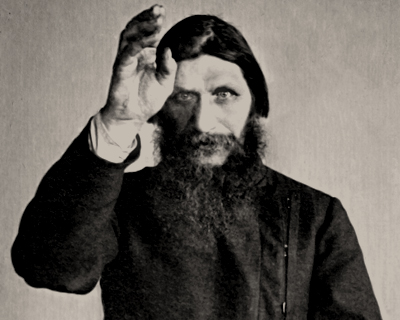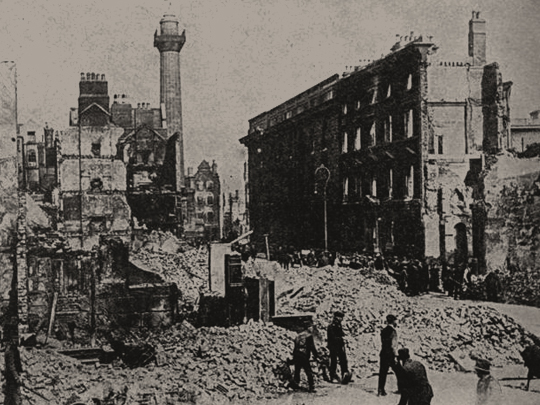The aftermath. / Miller, James Martin & H.S. Canfield / Wikimedia Commons / CC-BY-SA-3.0 / GFDL
1 – Easter Rising in Dublin Against British Occupation
The Easter Rising was an armed insurrection in Ireland that began on Easter Monday, 24 April 1916, and lasted for six days.
The Rising was launched by Irish republicans to end British rule in Ireland and establish the independent Irish Republic. It was the most significant uprising in Ireland since the rebellion of 1798.
The Rising began on Easter Monday, 24 April 1916, and lasted for six days.
The Irish Volunteers, led by Patrick Pearse, were joined by James Connolly’s Irish Citizen Army and 200 women from Cumann na mBan, seized key locations in Dublin and proclaimed the Irish Republic.
The British army’s greater numbers and heavier weapons suppressed the Rising and forced an unconditional surrender on Saturday 29 April.
Almost 500 people were killed in the Easter Rising, with more than 2,600 wounded. The shelling, and the fires it caused left parts of inner-city Dublin in ruins.
About 1,800 people were sent to internment camps or prisons in Britain. Most of the leaders of the Rising were executed following courts-martial. Read about these men here.
The Rising brought physical force republicanism back to the forefront of Irish politics. This, and the British reaction to it led to increased popular support for Irish independence.
In December 1918, Republicans won a landslide victory in the general election to the British Parliament. They did not take their seats, instead, convening the First Dáil and declared the independence of the Irish Republic, which led to the War of Independence.
2 – The Great Arab Revolt begins against the Ottoman Empire

The Great Arab Revolt began on June 5, 1916, and was declared on June 8 by the Sherif Hussein bin Ali.
Their aim was to secure independence from the ruling Ottoman Turks and create a single unified Arab state spanning from Aleppo in Syria to Aden in Yemen.
Though the Sherifian revolt has tended to be regarded as a revolt rooted in a secular Arab nationalist sentiment the Sherif did not present it in those terms.
He accused the Young Turks of violating the sacred tenets of Islam and called Arab Muslims to sacred rebellion against the ostensibly “impious” Ottoman government.
Contrarily, Turks accused rebelling tribes for betraying the Muslim Caliphate during his campaign against imperialist powers which were trying to divide and govern the Muslim lands.
3 – The First Battle of the Somme

This First World War battle was fought by the armies of the British and French empires against the German Empire.
It took place between July 1st and 18 November 1916, on both sides of the upper reaches of the River Somme in France.
The battle was intended to hasten a victory for the Allies and was the largest battle of the First World War on the Western Front.
The first day on the Somme saw a serious defeat for the German Second Army, which was forced out of its first position by the French Sixth Army.
The first day on the Somme was also the worst day in the history of the British army, which suffered 57,470 casualties.
In total, more than one million men were wounded or killed, making it one of the bloodiest battles in human history.
The battle was also notable for the importance of airpower and the first use of the tank.
4 – Grigori Rasputin is Killed

Grigori Rasputin was a Russian peasant, mystical faith healer, and a trusted friend of the family of Nicholas II, the last Tsar of Russia.
He became an influential figure in Saint Petersburg, after winning the favor of the Tsar, and his wife Alexandra, through his ability to stop the bleeding of their hemophiliac son, Alexei, in 1908.
From then on, though he was widely criticized, Rasputin exerted a powerful influence on the ruling family of Russia, infuriating nobles, church figures, and peasants alike.
This influence came to an end on the evening of 29 December 1916. Though the facts of the night may be slightly exaggerated or embellished.
A group of conspirators, including the Tsar’s first cousin, Grand Duke Dmitri Pavlovich, and Prince Felix Yusupov, invited Rasputin to Yusupov’s palace, feeding him wine and cake laced with cyanide.
Rasputin eventually became drunk, but the poison seemed to have no effect. When he failed to react to the poison, he was shot at close range. A short time later, however, Rasputin regained consciousness and attempted to escape.
He was then shot again and viciously beaten. The assassins bound Rasputin and tossed him off a bridge into the freezing Neva River.
Unfortunately for the killers, Rasputin’s coat formed an ‘air bell’ and the corpse drifted into an ice mass, preventing the body’s passage out to sea.
Rasputin’s body was discovered several days later and the two main conspirators, Yusupov and Pavlovich, were exiled.









